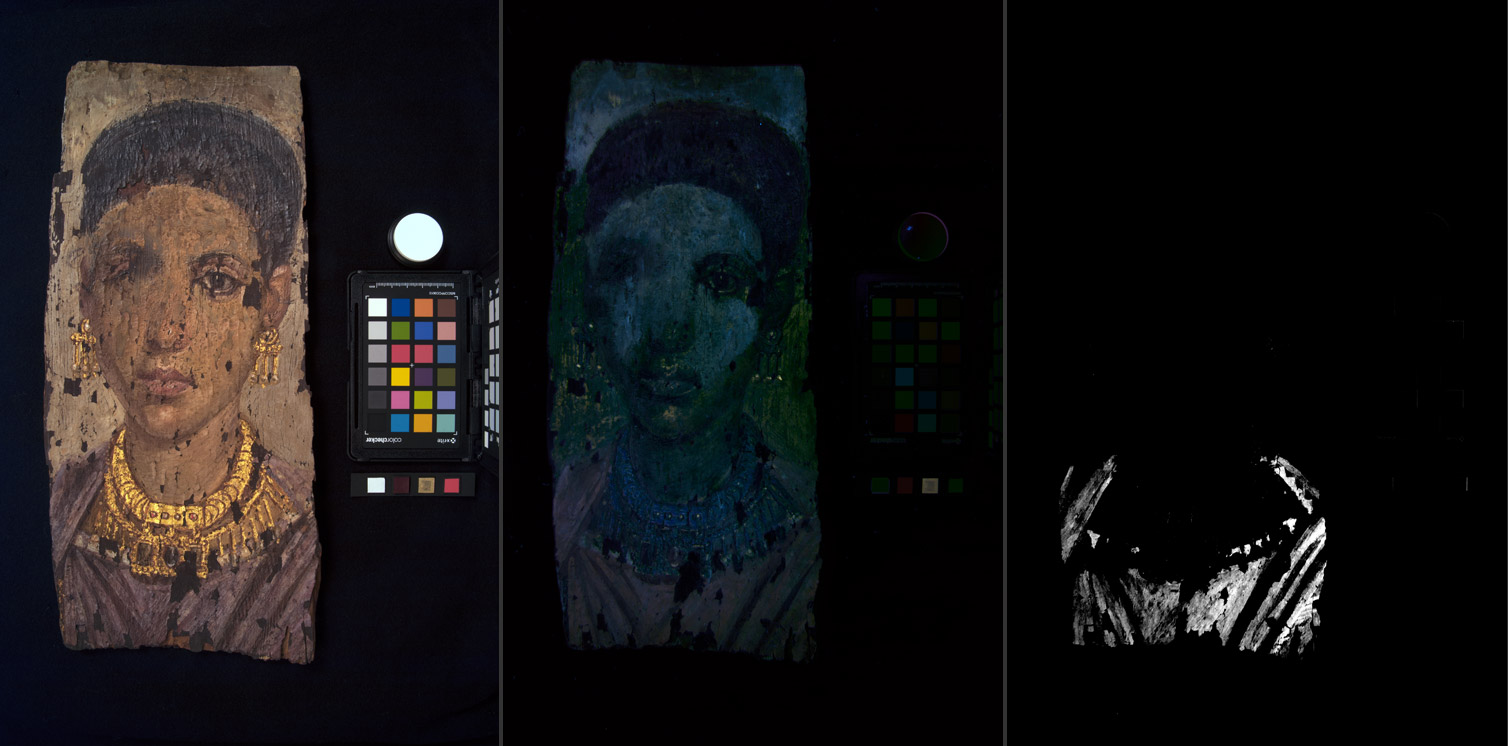Case Study: Mummy Portrait of a Woman

This beautiful mummy portrait was created during Egypt’s Roman period, a time when artists were using new materials and painting techniques from all over the Roman Empire. Which pigments did the artist select to create this portrait? Kelsey conservators teamed up with conservation scientist Christina Bisulca and imaging specialist Aaron Steele from the Detroit Institute of Arts to learn more.
Using investigative techniques such as MSI, PLM, FORS, and FTIR analysis, we discovered that beeswax was used as the binder for a variety of pigments. Lead white was mixed with carbon black and various iron-based earth pigments (reds, yellows, greens, browns) to achieve the colors used for the skin and the light gray background. Cinnabar/vermilion was used to paint the bright red gems in the woman’s necklace. The dark blue stone at the center of her pendant contains indigo. Her purple robe contains a surprising mixture of Egyptian blue and rose madder, each of which shows up clearly in ultraviolet and infrared images. View a silent video of Carrie Roberts investigating the Fayum portrait.
